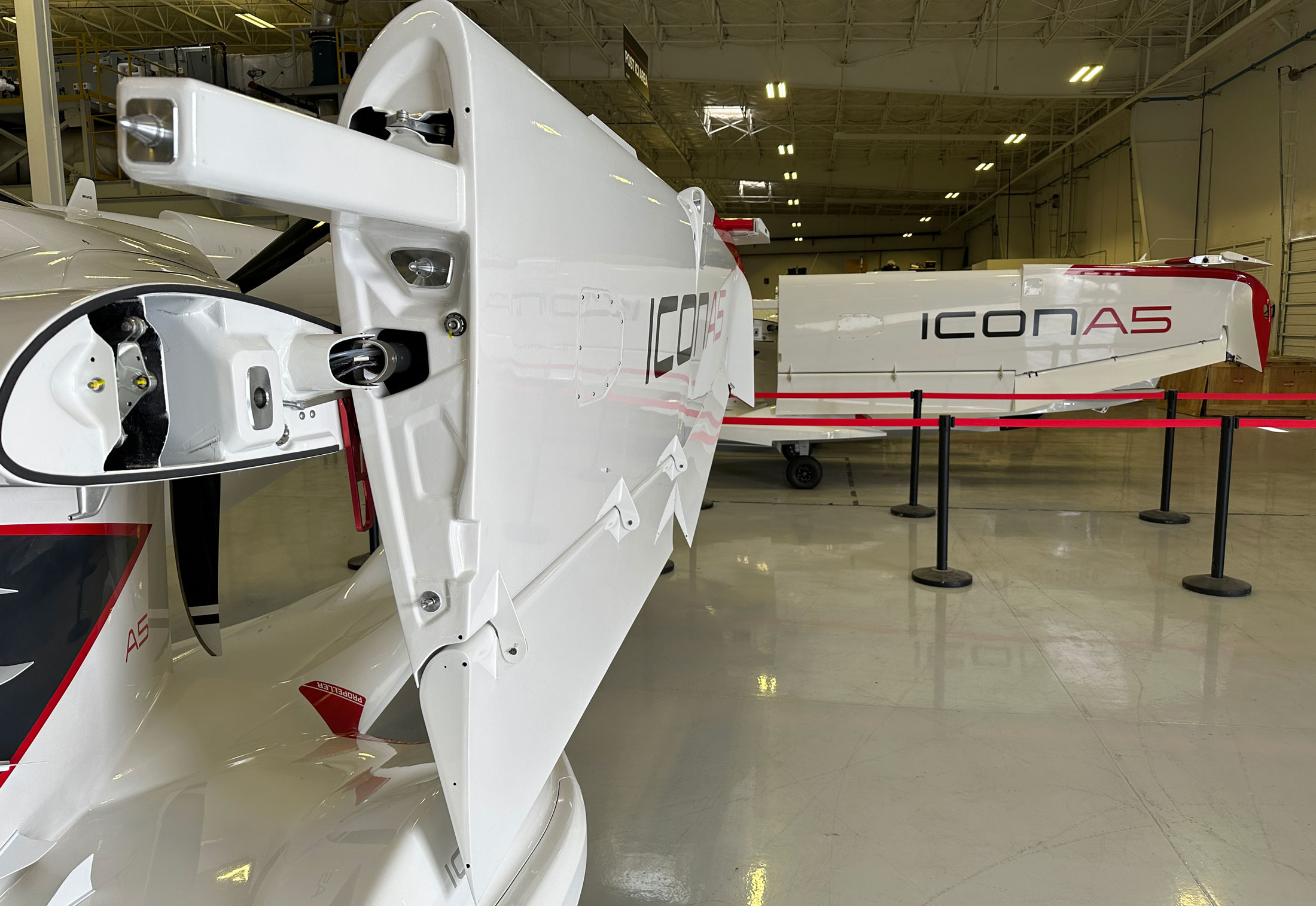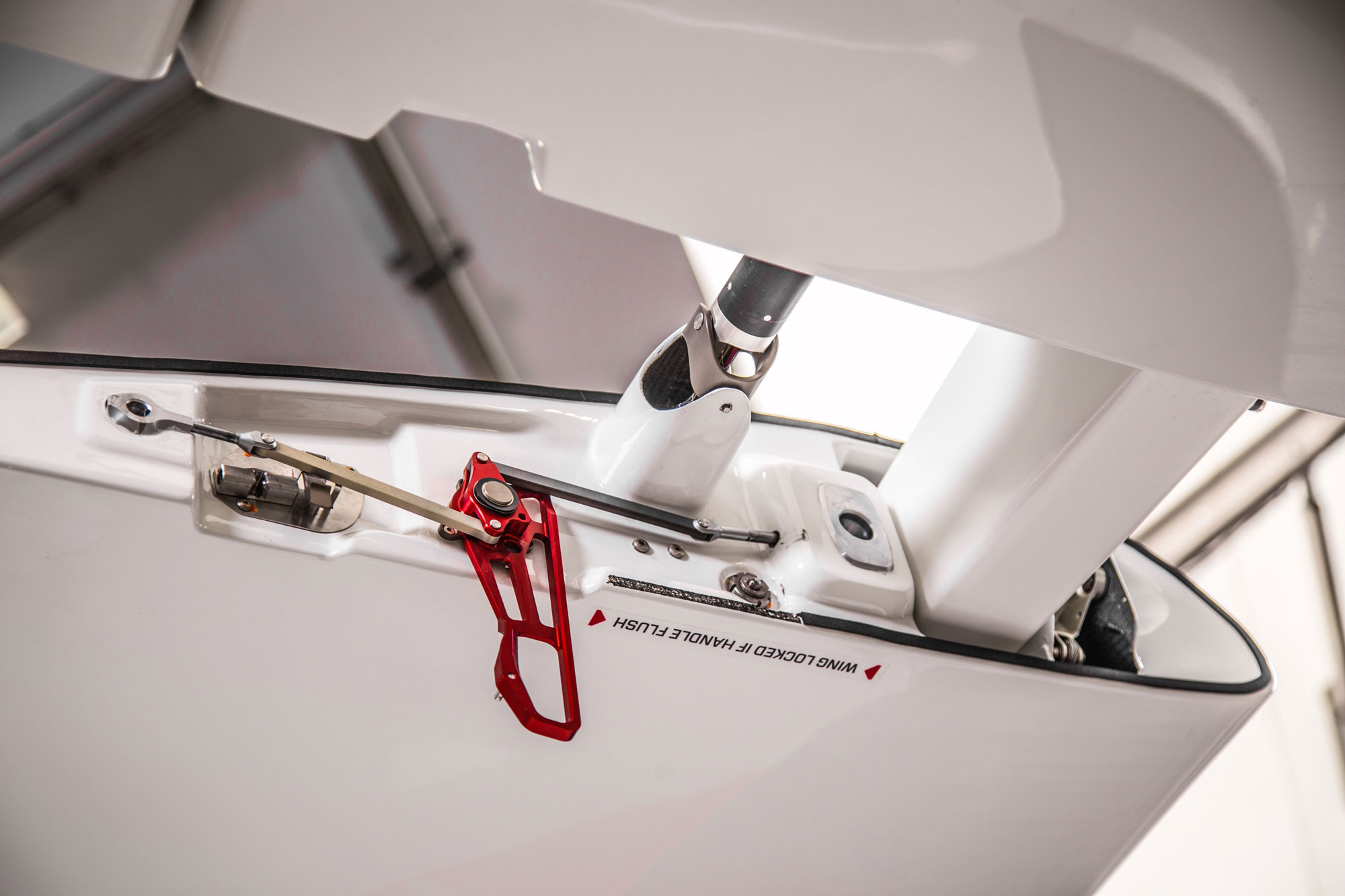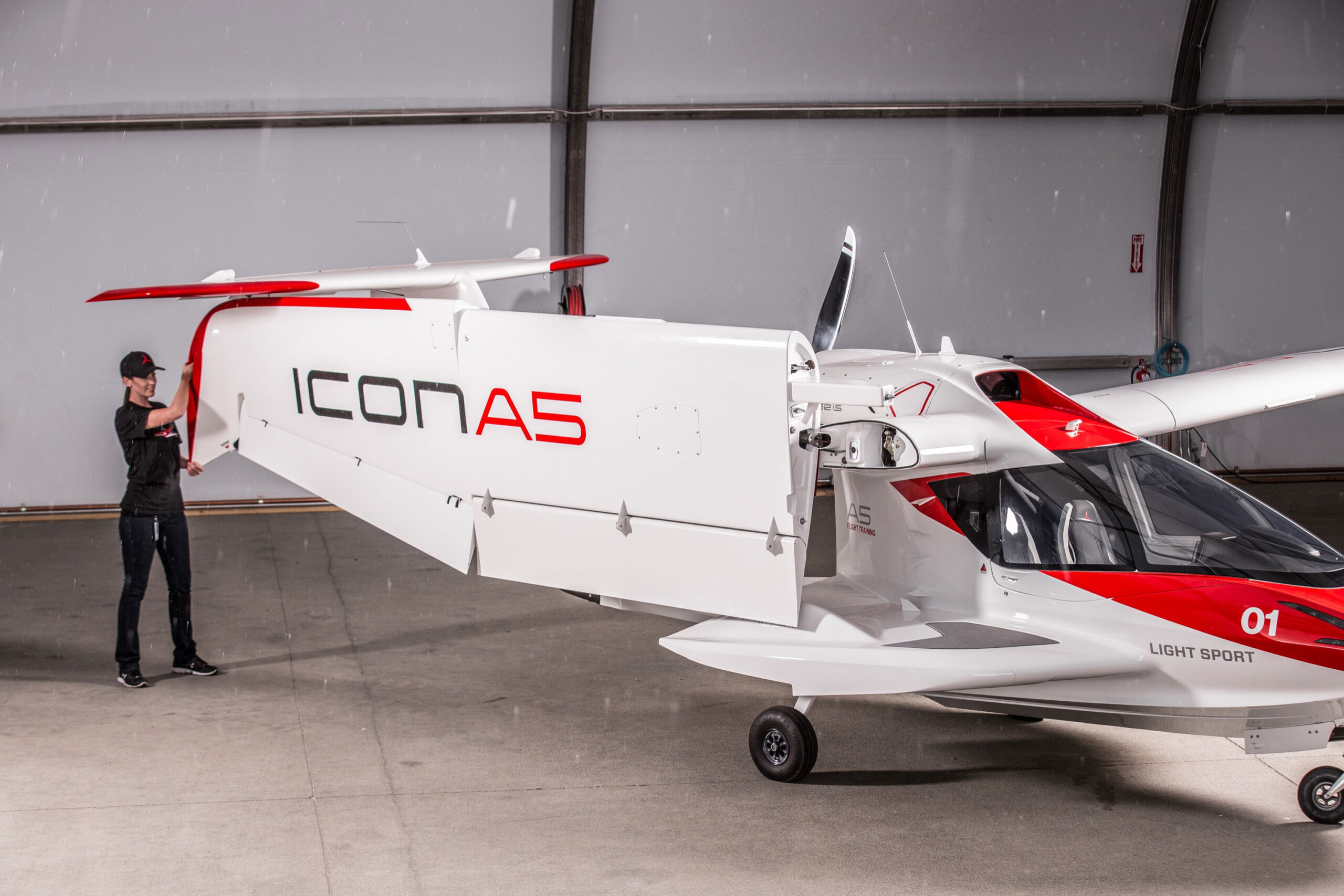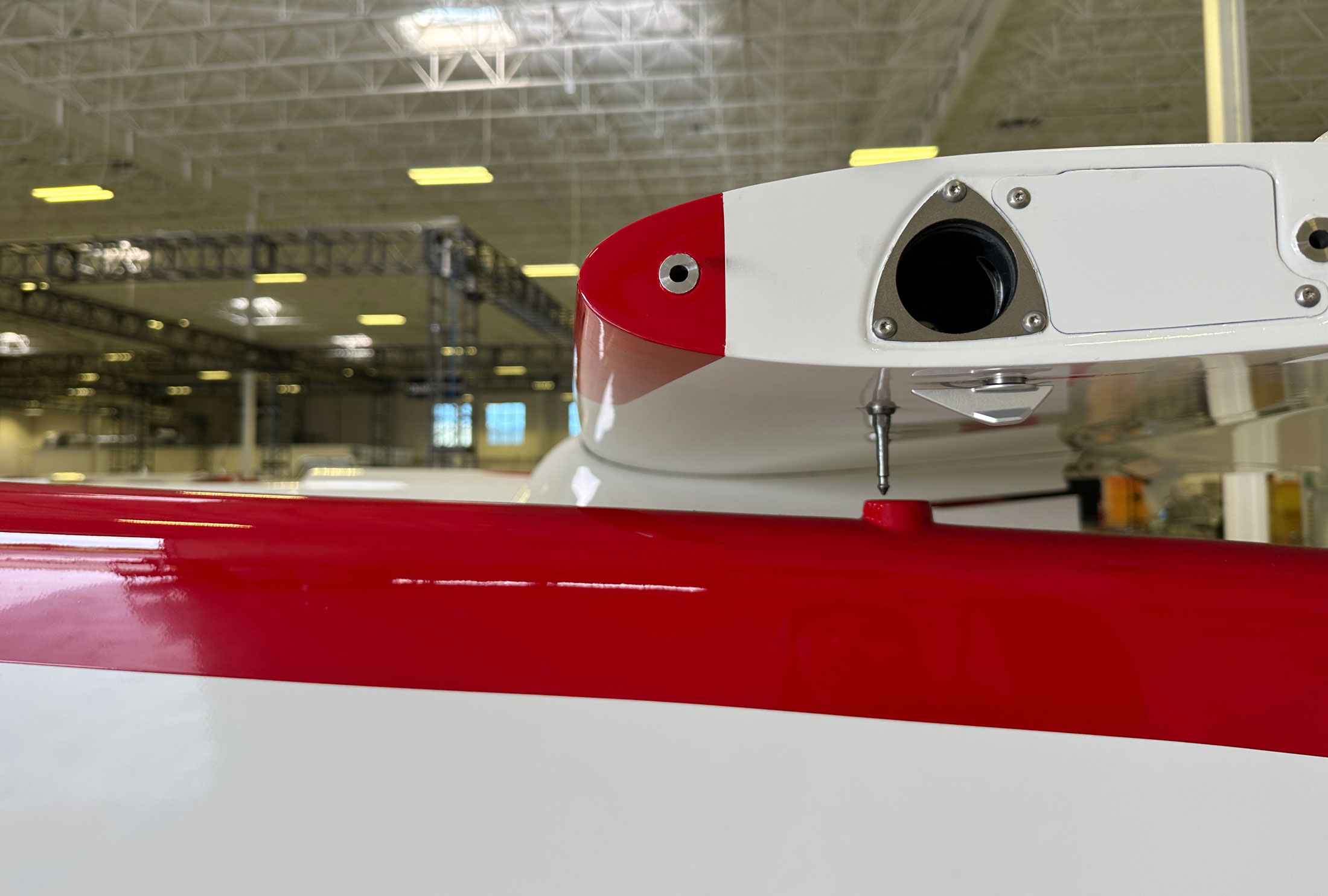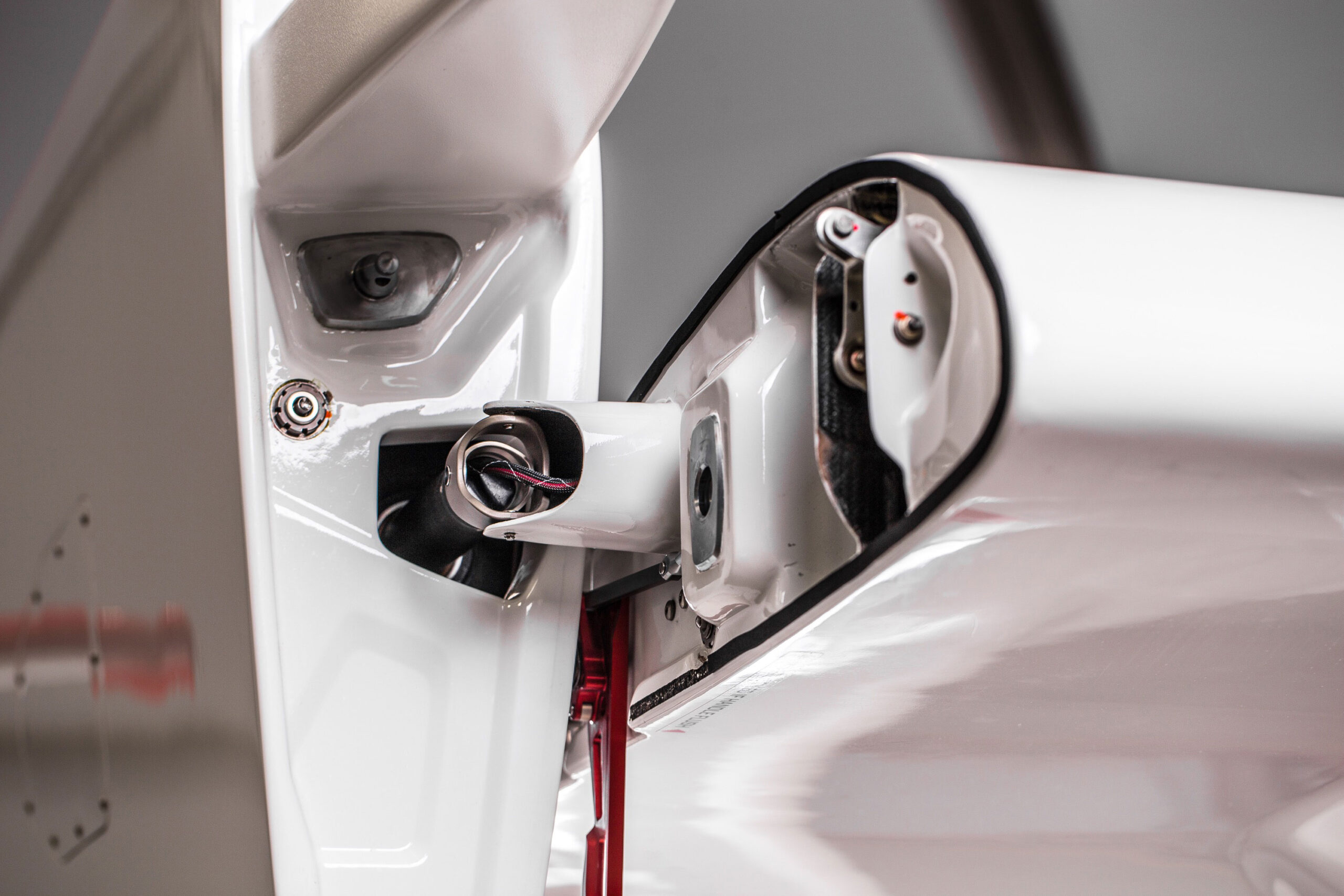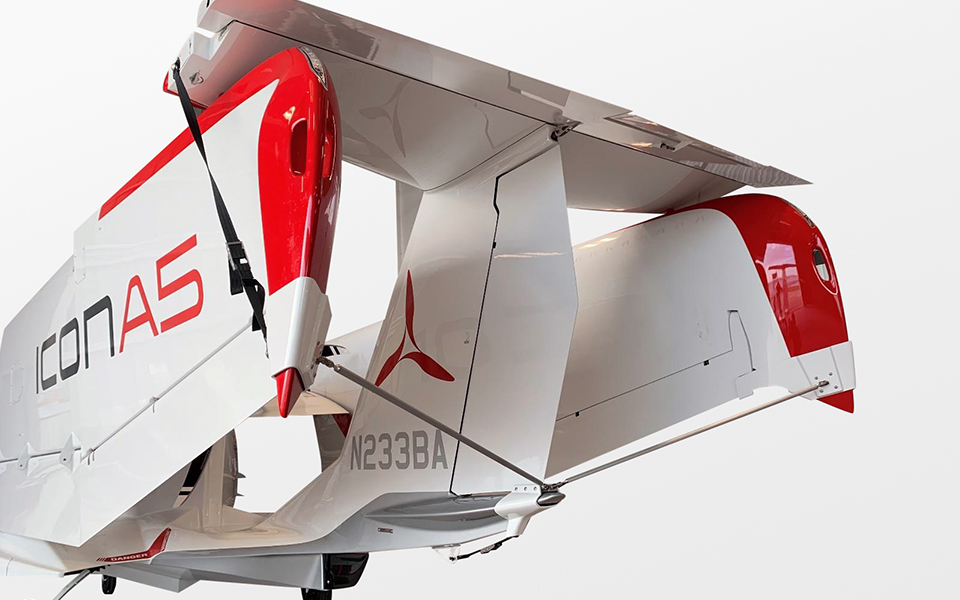Unfold and Fly
Discover The ICON A5 Wing Fold System
When displaying the A5 at events and demo days, the wing fold demonstration is what often draws the most unique responses from fans and prospective customers. The A5 is not the only aircraft with the ability to fold its wings, but the ICON Wing Fold system is one of the most advanced and user-friendly systems available in a general aviation aircraft.
Simply put, the ICON Wing Fold System wasn’t designed just for the wings to be folded or removed, but for the process of folding and unfolding to be easy and ergonomic for the pilot to accomplish in just a few minutes.
The system is manual and does not require electrical power. The process starts with the user pulling down on the wing fold locking latch underneath the wing, near the wing root. Next, the operator walks to the end of the wing and simply pulls it out from the attachment points. Then, the wing is rotated 90 degrees, walked back to the horizontal tail, and attached to the wing hang pin.
That’s it.
In order to fully appreciate this unique system, here is a bit more detailed explanation of how the parts work together and how ICON ensures this versatility does not sacrifice safety or stability.
Folding Wing
Same Stability
Upon unlatching the wing from the fuselage, the wing spar and attachment points become visible. Even though the wing is foldable, the wing is not removed from the aircraft; the spar and the rest of the wing remains intact. A slide tube extends out from the interior portion of the wing, allowing it to remain connected to the airframe, acting as the joint mechanism for the wing to fold and for the user to move the wing aft of the aircraft, towards the horizontal tail.
As mentioned, the ICON Wing Fold System offers incredible versatility while at the same time remaining safe and secure during flight. In fact, responsiveness and incredible stability are some of the most common reactions we receive from both pilots and non pilots when flying the A5 for the first time. During the development process, the A5’s wings were loaded and tested to levels considerably higher than what would be encountered during even the most challenging operating conditions. While it was a critical design objective to develop a versatile aircraft that can quite literally be transformed, it was equally as important that this versatility did not sacrifice stability and performance.
Warning: Your Wing is Unlocked
The ICON A5 has a warning light on the annunciator panel to indicate if the wing is not fully secured. When the wing is properly in place, a signal is sent from sensors on the attachment points to the A5’s warning system. If that signal is not received, the warning light will illuminate on the annunciator panel in the cockpit, indicating the wing is not secure and needs to be checked.
There is a similar system in place for the removal of the tail tips on the horizontal tail. If those are not securely locked into place, a warning light will illuminate.
Form Meets Function
The ICON Wing Fold System is an example of ICON’s focus on both function and design — particularly the wing locking handle. Ergonomic and easy to adjust, the handle is the only of its kind that exists in general aviation. It wasn’t enough for ICON to just make the Wing Fold System capable and safe. It needed to be easy for a person of any stature to handle, repeatedly. Given the design of the latch, with just one hand, a person can unlock the wing and begin the process of folding it to the back of the aircraft, securing it to the horizontal tail.
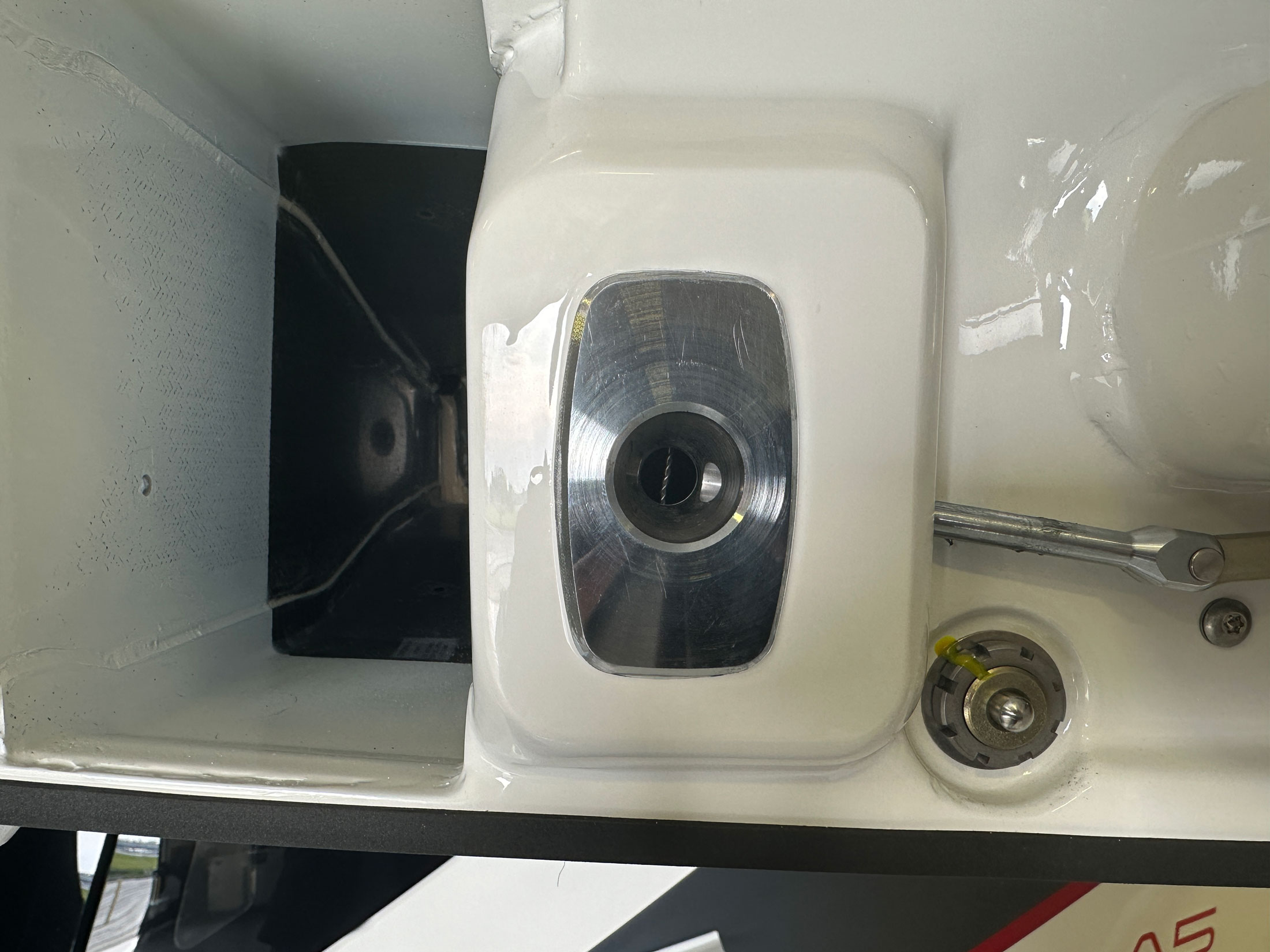
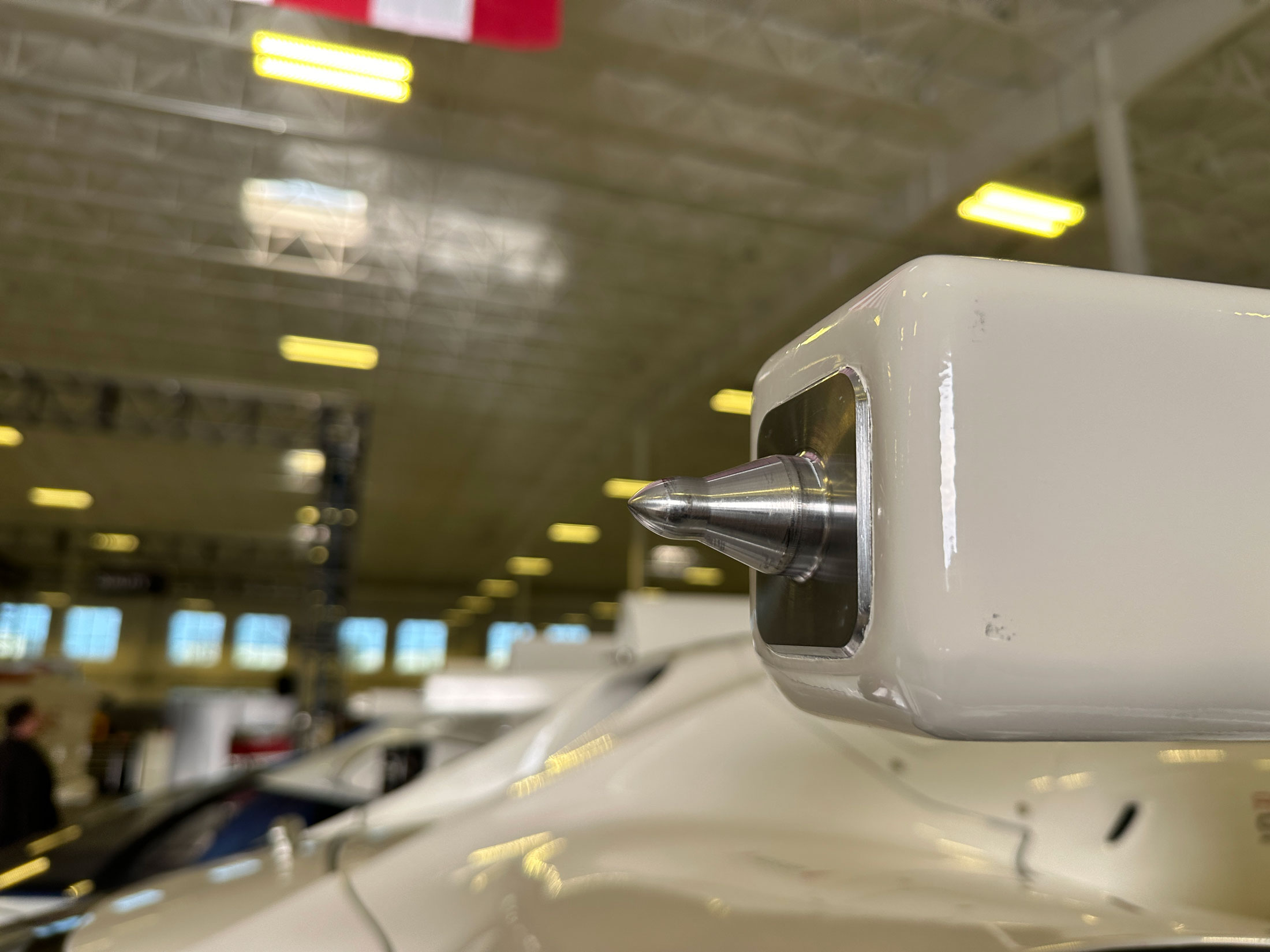
Designed to Be Manufactured at Scale
The A5 has three attachment and loading points that are critical to align during the manufacturing process to make sure that the wings fit properly and fold as intended. This part of the process has very small tolerances (just a few millimeters in some cases) to ensure that the wings secure to each attachment point correctly. ICON production facilities possess state-of-the-art capabilities for not only producing the A5 to these demanding specifications but also producing the aircraft at a rate suitable for market demand. As ICON nears the completion of our 200th A5 later this year, the facility and the exacting manufacturing processes that enable mass production of this intricate system have proven valuable, if not more valuable than the novel design itself.
Fold Wings. Not Fuel
When folding and unfolding a wing, the effective weight in your hands is approximately 35 pounds (the wing fold torque tube at the wing root carries the remaining weight). If fuel was stored in the wing of the A5, as it is in other general aviation aircraft, it would add substantial weight to the wing and also require additional reinforcement, which would add further weight. As a result, the A5’s 20-gallon fuel tank is located in the hull of the fuselage, underneath the storage compartment.
In addition to being necessary for the design of the aircraft, the A5’s single fuel tank makes it easier for the pilot to manage fuel consumption and not have to switch back and forth between wing tanks to manage fuel and center of gravity.
Safe and Secure
Finally, the wing hang lock mechanism on the leading edge of the outboard portion of the wing is one of the most pivotal components of the ICON Wing Fold System. Located on the outboard portion of the wing, the wing hang receptacle is designed to allow only the wing hang pin to be inserted into it, to prevent FOD from entering and possibly affecting the quality of the mechanism. Above is an illustration of how wing hang receptacle and wing hang pin interact on the horizontal tail (also known as the HT).
Fold, Unfold, Repeat.
Is there a limit on how often the wings can be folded? In other words, does the system cause any wear and tear on the aircraft that could degrade over time? The short answer is no. During the annual inspection, the wing and wing hang attachment points are inspected to ensure correct operation and any components that show wear and tear or corrosion would be replaced.
For More Support…
Wing folding operations involve rotating the wing and then attaching the wing hang pin on the HT to the wing fold receptacle on the end of the leading edge of the wing. Wing hang pins are engineered to support considerable loads, beyond those that would normally be attributed to the weight of the wing hanging on the HT. With proper handling (freshwater rinse after salt-water operations and general maintenance) the A5 can be stored with the wings folded indefinitely, assuming the aircraft isn’t exposed to strong crosswinds or gusts.
Considerations should be made when the aircraft is being transported. Vibrations caused by trailering the aircraft can place significant loads on the wing hang pin itself, which is why the ICON A5 Wing Support System (pictured above) is required for trailering operations.
For more information on the ICON A5’s specifications, or to experience a demo flight, please contact us here.
